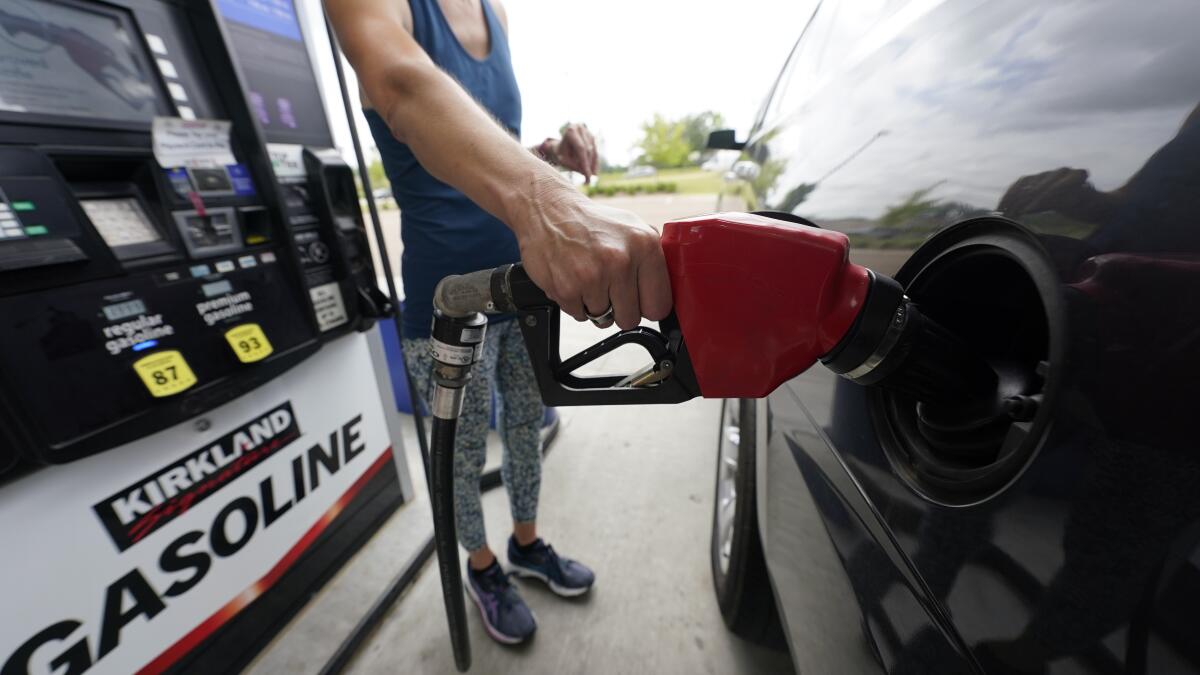U.S. consumer inflation eased to 7.7% over last 12 months

- Share via
WASHINGTON — Price increases moderated in the United States last month in the latest sign that the inflation pressures that have gripped the nation might be easing as the economy slows and consumers grow more cautious.
Consumer inflation reached 7.7% in October from a year earlier and 0.4% from September, the Labor Department said Thursday. The year-over-year gain was the smallest since January. Excluding volatile food and energy prices, “core” inflation rose 6.3% in the last 12 months and 0.3% from September.
The numbers were all lower than economists had expected.
Even with last month’s tentative easing of inflation, the Federal Reserve is widely expected to keep raising interest rates to try to stem persistently high price increases. Many economists warn, though, that in continuing to aggressively tighten credit, the Fed is likely to cause a recession by next year.
Like many other countries, the United States is struggling to control inflation, which is pressuring millions of households and dimming the outlook for the economy as the Fed keeps raising borrowing costs for businesses and consumers. The acceleration of inflation was unleashed by shortages of supplies and labor after the pandemic recession, by a burst of consumer spending fueled by vast federal aid and by cutoffs of food and energy after Russia’s invasion of Ukraine.
So far this year, the Fed has raised its benchmark interest rate six times in sizable increments, heightening the risk that prohibitively high borrowing rates — for mortgages, auto purchases and other high-cost expenses — will tip the world’s largest economy into recession.
Inflation was near the top of many voters’ minds in the midterm congressional elections that ended Tuesday. Their economic anxieties contributed to the loss of Democratic seats in the House of Representatives, though Republicans failed to score the huge political gains that many had expected.
Even at its current high levels, inflation by some measures has begun to ease and could continue to do so in coming months. Most measures of workers’ wages, for example, show that the robust pay increases of the last 18 months have leveled off and have begun to fall. Though worker pay is not a primary driver of higher prices, it can compound inflationary pressures if companies offset their higher labor costs by charging their customers more.
Except for automakers, which are still struggling to acquire the computer chips they need, supply chain disruptions have largely unsnarled. Shipping costs have dropped back to pre-pandemic levels. The backup of cargo ships off the ports of Los Angeles and Long Beach has been cleared.
And as declines in new rents that have emerged in real-time measures from such sources as ApartmentList and Zillow begin to be captured in the government’s forthcoming measures, that factor should also reduce inflation.
Even as many fear that the economy will fall into recession next year, the nation’s job market has remained resilient. Employers have added a healthy average of 407,000 jobs a month, and the unemployment rate is just 3.7%, close to a half-century low. Job openings are still at historically high levels.
But the Fed’s rate hikes have inflicted severe damage on the American housing market. The average rate on a 30-year fixed mortgage has more than doubled over the past year, topping 7% before falling slightly last week. As a result, investment in housing collapsed in the July-September quarter, falling at a 26% annual rate.
Higher mortgage rates have depressed sales. Home prices are slowing sharply compared with a year ago and have begun to fall on a monthly basis. The cost of a new apartment lease is also declining.
Yet because of how the government calculates housing costs, economists think the price of housing might have surged in October and elevated broader inflation measures. The government measures the cost of all rents, including most rents that are under existing leases. Asking rents for new leases, though, are slowly declining.
And economists expect to see prices decline for many key goods. Used cars, which skyrocketed in price last year as shortages of computer chips sharply reduced the availability of new cars, are expected to have fallen from September to October. Wholesale used-car costs have declined steadily but have yet to show fully show up in retail prices.
AP economics writer Christopher Rugaber contributed to this report.
More to Read
Inside the business of entertainment
The Wide Shot brings you news, analysis and insights on everything from streaming wars to production — and what it all means for the future.
You may occasionally receive promotional content from the Los Angeles Times.









